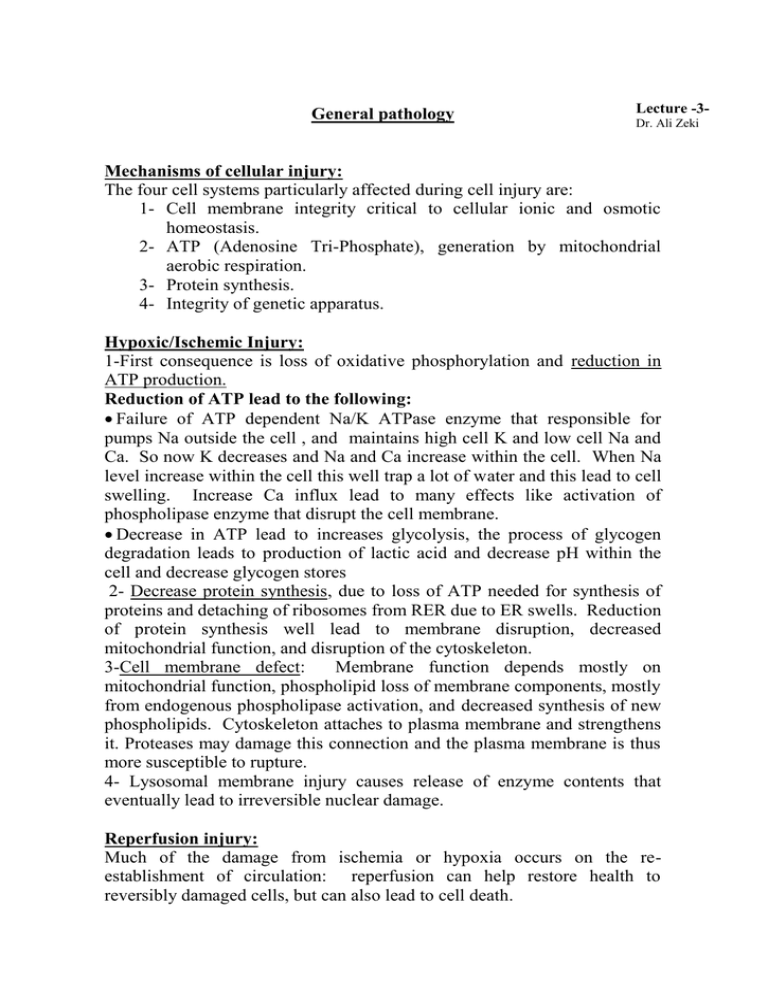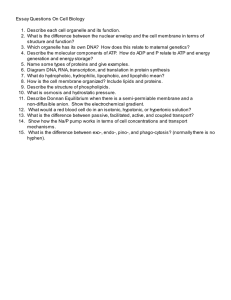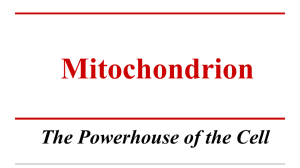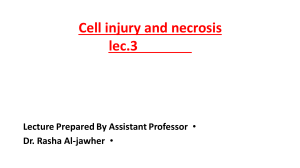General pathology Mechanisms of cellular injury:
advertisement

General pathology Lecture -3Dr. Ali Zeki Mechanisms of cellular injury: The four cell systems particularly affected during cell injury are: 1- Cell membrane integrity critical to cellular ionic and osmotic homeostasis. 2- ATP (Adenosine Tri-Phosphate), generation by mitochondrial aerobic respiration. 3- Protein synthesis. 4- Integrity of genetic apparatus. Hypoxic/Ischemic Injury: 1-First consequence is loss of oxidative phosphorylation and reduction in ATP production. Reduction of ATP lead to the following: Failure of ATP dependent Na/K ATPase enzyme that responsible for pumps Na outside the cell , and maintains high cell K and low cell Na and Ca. So now K decreases and Na and Ca increase within the cell. When Na level increase within the cell this well trap a lot of water and this lead to cell swelling. Increase Ca influx lead to many effects like activation of phospholipase enzyme that disrupt the cell membrane. Decrease in ATP lead to increases glycolysis, the process of glycogen degradation leads to production of lactic acid and decrease pH within the cell and decrease glycogen stores 2- Decrease protein synthesis, due to loss of ATP needed for synthesis of proteins and detaching of ribosomes from RER due to ER swells. Reduction of protein synthesis well lead to membrane disruption, decreased mitochondrial function, and disruption of the cytoskeleton. 3-Cell membrane defect: Membrane function depends mostly on mitochondrial function, phospholipid loss of membrane components, mostly from endogenous phospholipase activation, and decreased synthesis of new phospholipids. Cytoskeleton attaches to plasma membrane and strengthens it. Proteases may damage this connection and the plasma membrane is thus more susceptible to rupture. 4- Lysosomal membrane injury causes release of enzyme contents that eventually lead to irreversible nuclear damage. Reperfusion injury: Much of the damage from ischemia or hypoxia occurs on the reestablishment of circulation: reperfusion can help restore health to reversibly damaged cells, but can also lead to cell death. Mechanisms of reperfusion injury: 1-Circulation brings PMNs (neutrophils especially) that release toxic oxygen radicals that do damage to membranes. Damaged cells may express cytokines that attract PMNs to them and cause inflammation with additional injury. 2- Reperfusion brings a massive influx of Ca++ which leads to activation of phospholipases, endonucleases, proteases (cytoskeleton), and DNAases 3- Formation of oxygen free radicals, (O•, H2O2, and •OH). Oxygen radicals (free unpaired electron in outer orbit) do three main things: 1.Lipid peroxidation takes an unsaturated fatty acid in membrane phospholipids and crease a damaged lipid and peroxide, which is autocatalytic and does more damage 2.Promotes sulfhydryl mediated protein cross linking that creates disulfide bonds which inactivate enzymes 3.Interact with DNA causing mutations. Apoptosis: differs significantly from necrosis. It is an energy dependent physiological process involved in removing unwanted individual cells and is a specialized form of programmed cell death that is characterized by: o chromatin condensation and formation of cytoplasmic membrane blebs (cell surface deformities caused by a cytoskeleton disruption) o breakdown of DNA into nucleosome-sized fragments o a minimal inflammatory response It has a central role in morphogenesis, maintaining organ size, and atrophy. Apoptosis can also occur in the removal of defective cells. Mechanisms : Apoptosis begins with the activation of endogenous proteases and endonucleases , this results in the degradation of the cytoskeletal structure, fragmentation of DNA and loss of mitochondrial function. The cell shrinks, retaining its plasma membrane, however, if the plasma membrane is altered, phagocytosis occurs. Cells not phagocytosed break into smaller membrane-bound fragments called apoptotic bodies. These is no inflammatory reaction to these bodies. Apoptosis vs. Necrosis : comparison Features Necrosis Causes Invariably due to pathological injury Affects Mechanisms Cell groups Impairment or cessation of ion homeostasis Lysosomes leak lytic enzymes Cell swelling and lysis Morphology Fate Common Phagocytosed by neutrophil polymorphs and macrophages Apoptosis May be induced by physiological or pathological stimuli Single cells Energy-dependent fragmentation of DNA by endogenous endonucleases Lysosomes intact Cell shrinkage and fragmentation to form apoptotic bodies with dense chromatin None Phagocytosed by neighboring cells programmed cell death can occurs normally in many conditions like: 1- Aging. 2-Development (Embryogenesis). 3-Defense mechanism in the immune system. Specific examples include T cell deletions in thymus. 4-Embyrogenesis (loss of tissue between fingers), 5-Hormone dependent involution (return of uterine lining to normal following pregnancy). 6-Cell death in tumors. 7-Neutrophilic death in acute inflammation. Morphological changes: cells are smaller with dense cytoplasm. The chromatin is condensed in fragments near the nuclear periphery. Apoptotic bodies form, which are membrane bound with some cytoplasm and organelles and sometimes nuclear fragments. These are taken up by normal cells nearby and degraded in lysosomes. Unregulated apoptosis plays a role in a variety of diseases. A- When inhibited, cells may survive longer as in cancer and autoimmune disorders. B- When accelerated, cells may die sooner as in AIDS depletion of lymphocytes and degenerative neurological disorders.







